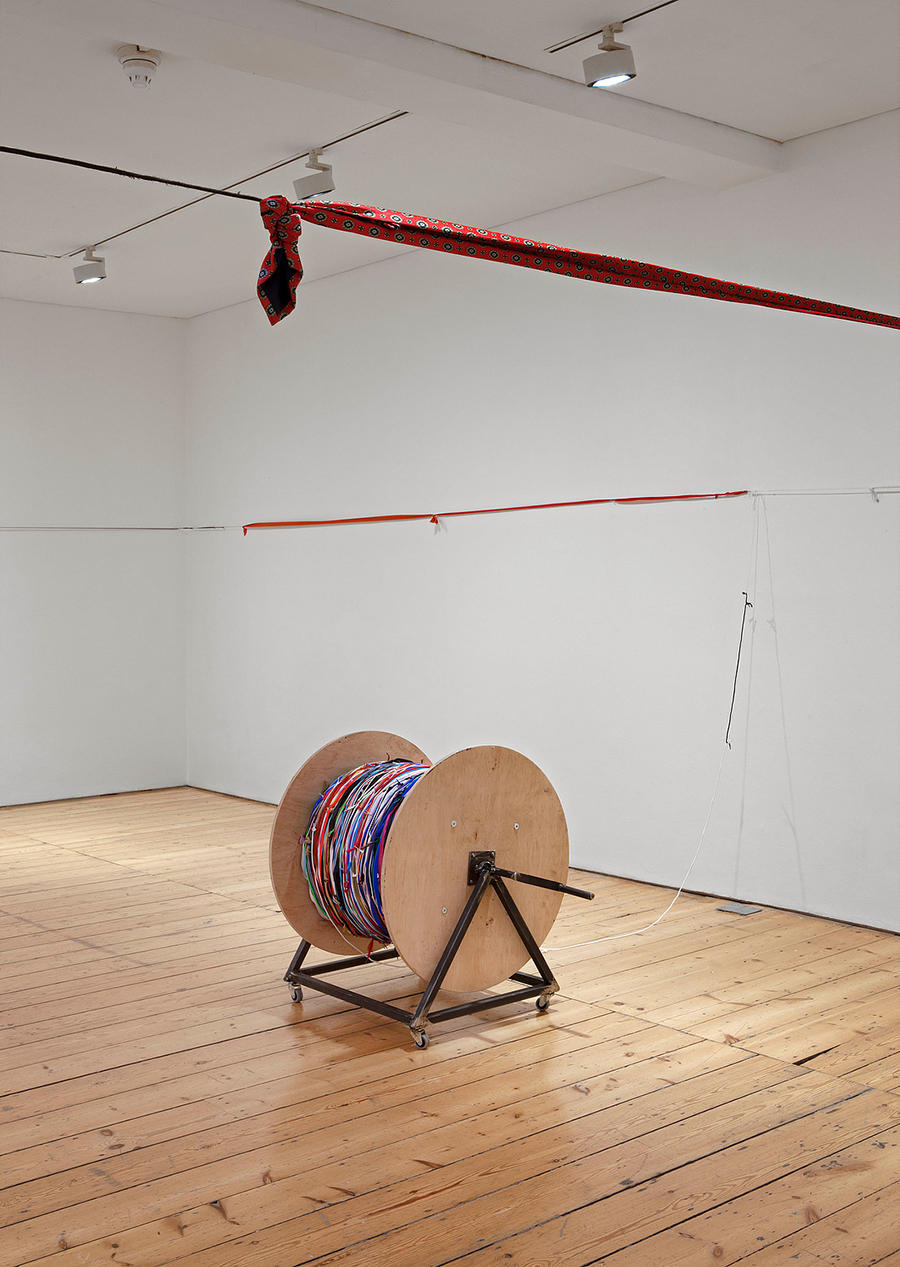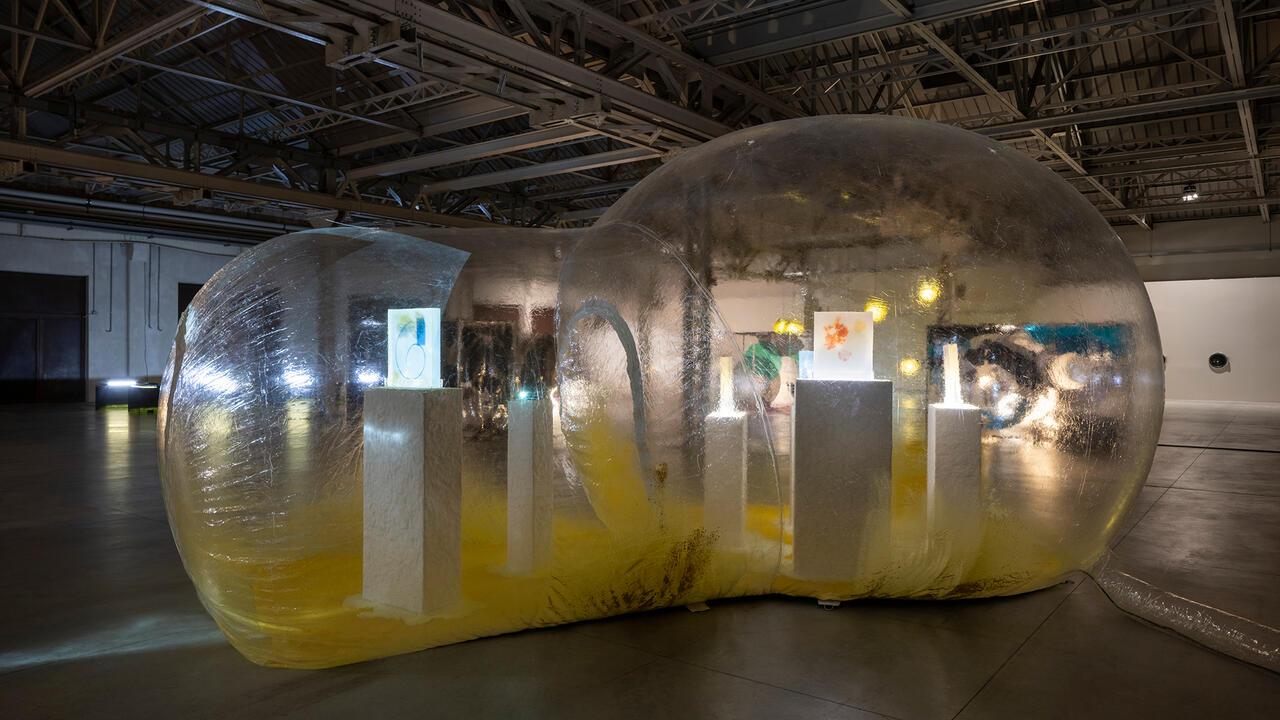Atrocity Exhibition: Francesco Arena’s Politics of Imperceptibility
Ahead of the Italian artist’s show at Raffaella Cortese, Milan, a look at his ideations of suffering and injustice
Ahead of the Italian artist’s show at Raffaella Cortese, Milan, a look at his ideations of suffering and injustice

Walter Benjamin. Elias Canetti. Louis-Fernand Céline. Susan Sontag. Bruno Taut. At first blush, the biographical and historical coordinates of Francesco Arena’s installations evoke a rarefied constellation of intellectual luminaries. The physical contingencies of Arena’s work are, however, consistently, even doggedly, earth-bound. Ash, string, clay, and dirt alternate with more exalted materials like marble, bronze and granite, consistently yoked – in whatever configuration – to subtle questions of historical and political import. As emphatically physical as they are conceptual, Arena’s installations most often appear in the form of simple, three-dimensional elements, which in turn conjure up acts of commemoration, reflection, and meditation upon events both contemporary and historical.
To take one early example, 3.24m2 (2004) recreates, in the form of a large wooden box, the dimensions of the compartment in which the former Italian premier Aldo Moro was held captive for two months by the radical leftist Red Brigades. As with the gamut of the artist’s works, the cube’s unadorned wooden geometry belies more intricate allusions, as do, for instance, the plain white slabs of 2011 Genoa (Group Photo). Cast in marble mud (a by-product of workshop processing), a series of ten uneven blocks reflect the respective heights of world leaders present at the 2001 G8 summit ten years earlier. Measuring 5 to 22 centimetres, the rough-hewn slabs correspond to the elevation at which Carlo Giuliani – an anti-globalization protestor gunned down by police – would have to stand to look each leader in the eye. 18,900 Meters on Slate—Pinelli’s Route (2009), meanwhile, extends its installation to comprise an entire room. Hundreds of square, slate slabs correspond in collective measurement to the area walked by the anarchist railway worker Giuseppe Pinelli on his way to police custody in December 1969, where he fell to his death in still unresolved circumstances – a flashpoint in Italy’s post-war ‘years of lead’, riven by acts of political violence on both left and right. Yet if the space makes concrete the metaphysical wounds of Italy’s recent past, its physical components recall, far more than some explicit memorial, the sculpture of Carl Andre.

Such resonances remain on the surface, however. Arena’s spare geometries and often makeshift materials at once invoke and flout the legacies of minimalism and arte povera. The recurrence of cubes, blocks, shelves, and slabs conjures up various examples of minimalist sculpture, while Arena’s attention to process – the drying of mud, the knotting of coloured rags, the erosion of salt – and penchant for workaday materials inevitably conjure up the more local example of arte povera, which has witnessed a resurgent influence among a wide swathe of young Italian artists since 2000. Over and against the presentist orientations of arte povera and minimalism, however, the conceptual and phenomenological dimensions of Arena’s practice draw upon a substratum of historical referents, at once obscure and clear-cut. The data and statistics which subtend the installation range from lifespans, to calendrical dates, to measurements of the artist’s own body – numbers which take transubstantiated form in, or as, Arena’s sculptural installations. The missing axis of a small bronze pyramid in Corner with Perimeter is replaced by 16 metres of coiled ribbons and ropes – the length of one prison cell at the Hague’s International Criminal Court detention centre. Featuring a simple metal alcove occupied by a 78 year-old performer who engages passers-by, the recent Tired Corner (2018) alludes to years passed since Walter Benjamin’s 1940 suicide in the Spanish town of Portbou. By transfiguring the time since Benjamin’s death into the length of a life, Tired Corner at once memorializes the philosopher’s loss, and briefly measures contemporary existence – the casual conversation within gallery walls – against that historical void.

Arena’s body of work invites comparison to Thomas Hirschhorn’s multi-media installation-events, dedicated to the legacy of prominent European thinkers like Georges Bataille, Gilles Deleuze and Baruch Spinoza. The high-flown premise of these large-scale projects is counterbalanced by their fabrication in poor or working class neighbourhoods, as with, most recently, Hirschhorn’s 2013 monument to Marxist theorist Antonio Gramsci in a Bronx housing project. Yet while Hirschhorn’s rough-and-ready spaces largely skirt aesthetics in favour of didacticism, relational events and real-time recreation, Arena’s pieces consistently conjoin their intellectual or biographical allusions to delimited surfaces and structures. A range of ciphers and quantifications find articulation in concrete objects and striking form. By forcing together anthropometric and biometric measurements with conceptual lyricisms, Arena tacitly undermines the increasingly and overweeningly empirical dimensions of our biopolitical world.
In this sense, the closest approximation to his practice – and perhaps even an oblique touchstone – is the work of Alfredo Jaar, the Chilean-born, New York-based artist responsible for several decades of politically inflected installations. Jaar has long incorporated into his multi-media references to thinkers like Gramsci or the Romanian philosopher Emil Cioran. Even more apposite to Arena’s work is Jaar’s insistence upon making distant historical events present in metaphorical, but tangible, form. The three-panel colour photographic piece Field, Cloud, Road (1997), for example, homes in upon sites from the Rwandan Genocide, documenting only incidental aspects of the landscape – steeped in the cultural memory of national violence and extermination, but free of their physical inscription. A passing cloud, a field of green – in their seemingly blithe ordinariness, these attest both to the horrors of recent history and their frequent erasure from the field of vision or contemplation.

Arena likewise thrusts together the record of seemingly unrelated events and locales, reflecting upon their lingering significance. The various heights of bronze beams erected for The Days (2015) relate to everything from the length of the artist’s own beard, to the number of days Nietzsche resided in Turin before going mad, to the date of the United States’ first invasion of Iraq. If the coordinates of the piece are anchored in an autobiographical axis, Arena also typically relates these to phenomena far beyond the purview of his own person. In the same vein, Horizon (2012) raises a metal beam across a gallery space, its elevation corresponding to the height of the artist’s eyes, while the two centimetres of earth spread across its surface derive from the reception centre on the island of Lampedusa, where thousands of migrants have arrived following perilous journeys across the Mediterranean. The imposition of the artist’s own physical dimensions upon the piece foregrounds not his authorial prowess so much as his personal, corporeal rapport to the events of exile: whether of privilege, absence or empathy. Several of Arena’s recent efforts have centred upon the migration crisis facing the Mediterranean. Europe November 11 2015 (2016) recreates a temporary barrier erected between the countries of Slovenia and Croatia to control the flow of immigrants. Rigged from barbed wire, electric cables, shoelaces and other miscellaneous materials, the cordon threads a gallery space with the same length as its actual deployment in Eastern Europe, transposing into this institutional space – however metaphorically and (literally) elliptically – the actual blockade of foreign bodies.
The slow, gradual unfurling of historical and circumstantial allusions in Arena’s work defies the instantaneity of the twenty-four hour news cycle and soundbite cyber-culture. Like many conceptual practices, its semantic and affective upshot remains, at first, elusive, and requires – admittedly – the supplement of exposition. Ultimately, however, the formal lyricism and arresting simplicity of Arena’s installations – a cube of onyx merged with a book, the dance of craquelure across the surface of mud, blocks of polished bronze – command as much attention and admiration as the musings and ruminations to which they are bound.
Born in Torre Santa Susanna, Italy, Francesco Arena lives and works in Cassano delle Murge. His exhibition at Raffaella Cortese, Milan, opens 13 March and is on view until 24 April 2019.
Main image: Francesco Arena, 18,900 metres on slate (Pinelli's route), 2009, 322 pieces of slate, each: 60 × 60 ×1 cm. Courtesy: the artist and Galleria Raffaella Cortese, Milan






















